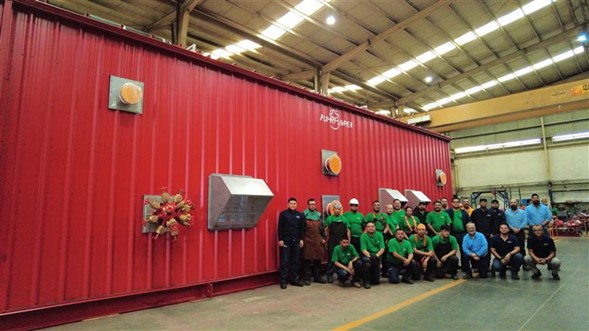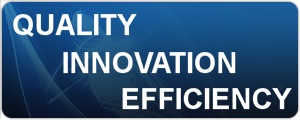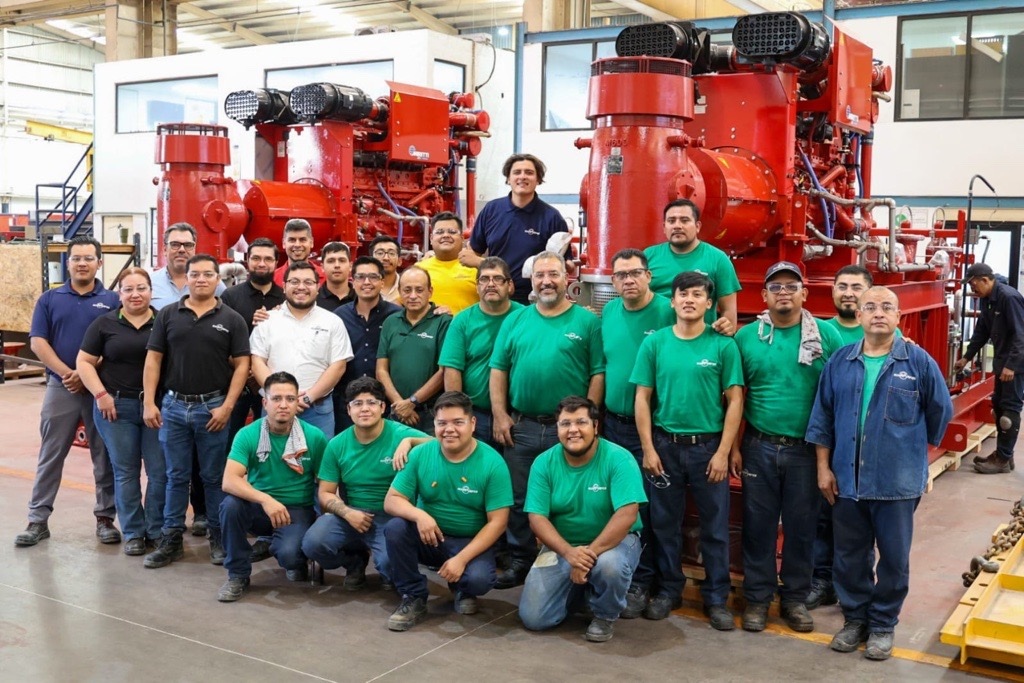Ruhrpumpen’s Fire Campus
In previous posts, we’ve already discussed the NFPA 20 standard and its importance in the firefighting industry. In this post, we’ll dive deeper into the main guidelines and requirements set by NFPA 20 to ensure fire protection systems function properly during an emergency. We’ll also include a brief step-by-step list covering the design, installation, operation, and maintenance processes.
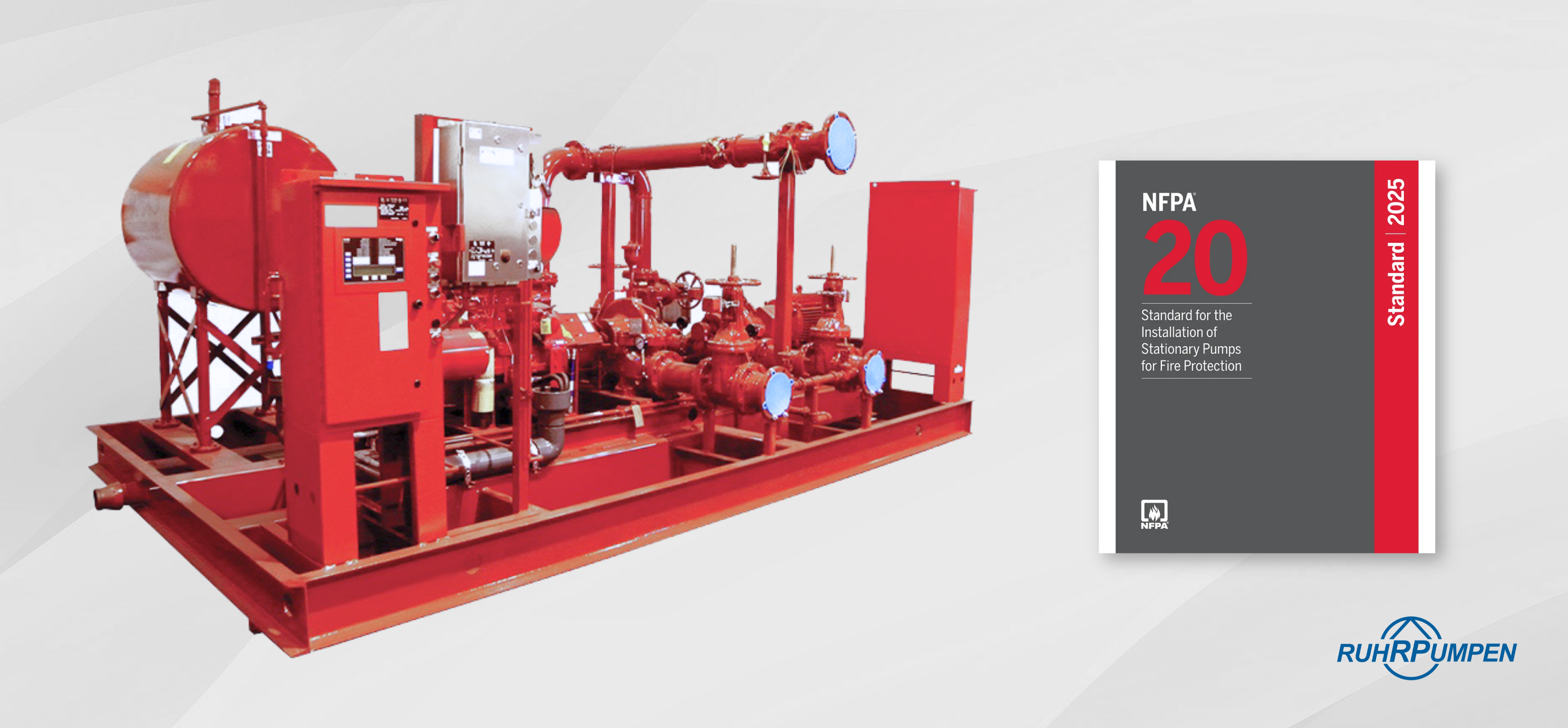
NFPA 20 does not provide a strict definition of a "reliable" power source within its enforceable sections. But Annex A offers important guidance often used by Authorities Having Jurisdiction (AHJs) to assess power reliability for fire pump applications.
According to this guidance, a power source is considered reliable if it meets certain criteria:
- First - The source’s power plant must not have experienced shutdowns lasting more than four continuous hours during the twelve months prior to the plan submittal.
- Second - The area or facility served by the source should not have a history of frequent unscheduled outages, with exceptions made for interruptions caused by natural disasters or large-scale utility failures.
- Third - The power supply to the fire pump should not be routed through overhead conductors located outside the protected premises, as these are more exposed to damage and fire risks.
- Finally, the system must be designed with a single disconnecting means and overcurrent protective device located at or near the fire pump controller, with no additional switches or devices that could inadvertently interrupt power to the pump.
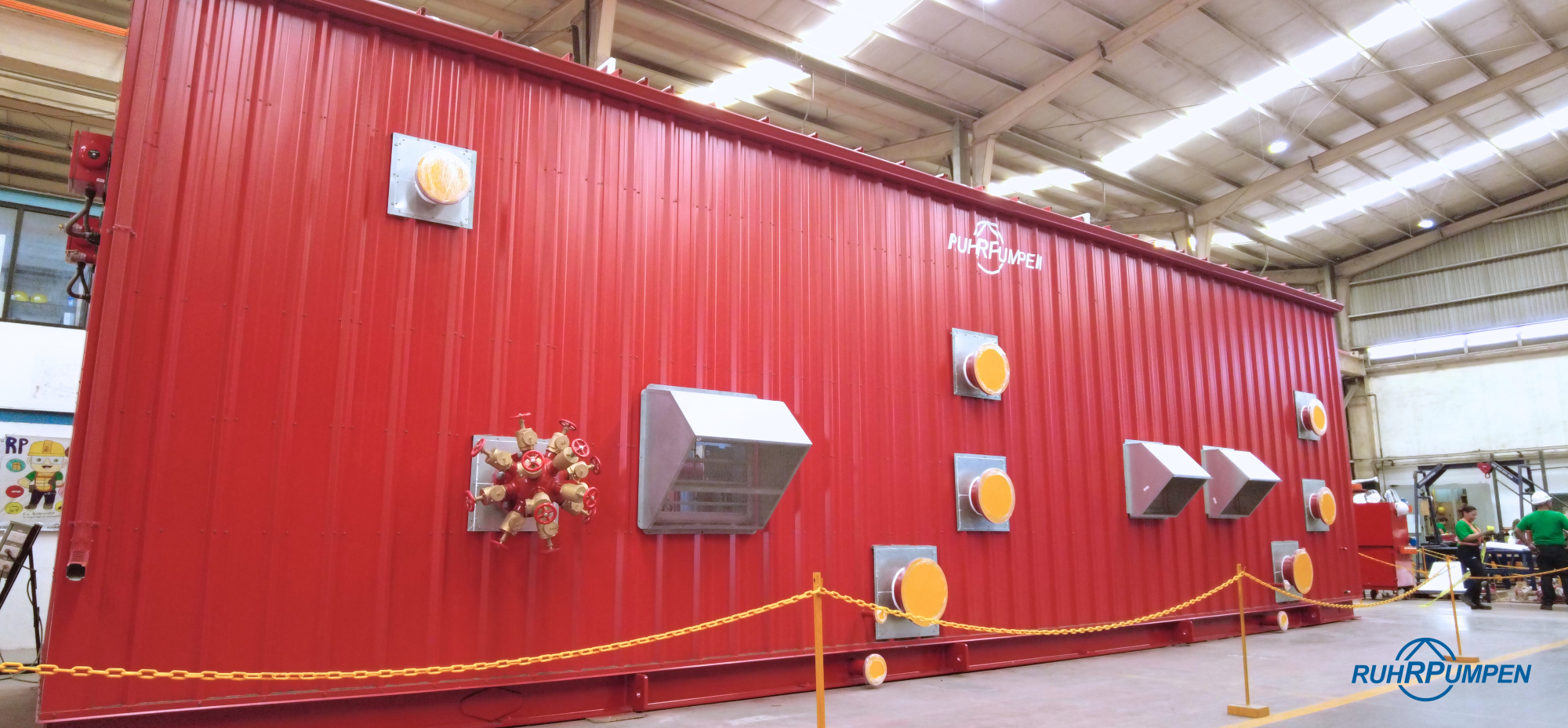
When these conditions are not met, and the normal power source cannot be deemed reliable, NFPA 20 requires the addition of at least one alternate source of power. Acceptable alternatives include a standby or emergency generator sized to support the full starting and running load of the fire pump, a second utility service or an independent utility feed from a different substation or network path, or a backup fire pump powered by a separate engine, such as a diesel-driven pump. The purpose of these requirements is to ensure that fire pumps remain operational under all circumstances, even if the primary electrical supply fails.
In addition to evaluating the reliability of the power source, NFPA 20 outlines other important technical considerations. The system must accommodate specific voltage drop limitations. When the fire pump starts at locked rotor condition, the power system must allow for a voltage drop, typically up to 15 percent, while under full running load, the voltage drop should not exceed 5 percent. Moreover, the infrastructure supporting the electrical supply—including feeders, service conductors, and switchgear—must be carefully designed and protected. This includes placing conductors underground or in fire-rated enclosures where necessary to safeguard them from physical damage or fire exposure.

For professionals at Ruhrpumpen’s Fire Systems Division, this information has several practical implications.
First, it is important to collect and review utility performance data in every project—specifically looking for outage history and any extended shutdowns. This will help determine whether the primary power source meets NFPA’s criteria for reliability. If the utility supply is found to be insufficient, the system design must include an appropriate alternate power solution, whether through a generator, dual feed, or alternate pump type.
Early coordination with the AHJ is essential, as they have final authority in determining whether the chosen power source is acceptable. Presenting technical data and proposed alternatives during the design phase can help avoid costly delays or redesigns.
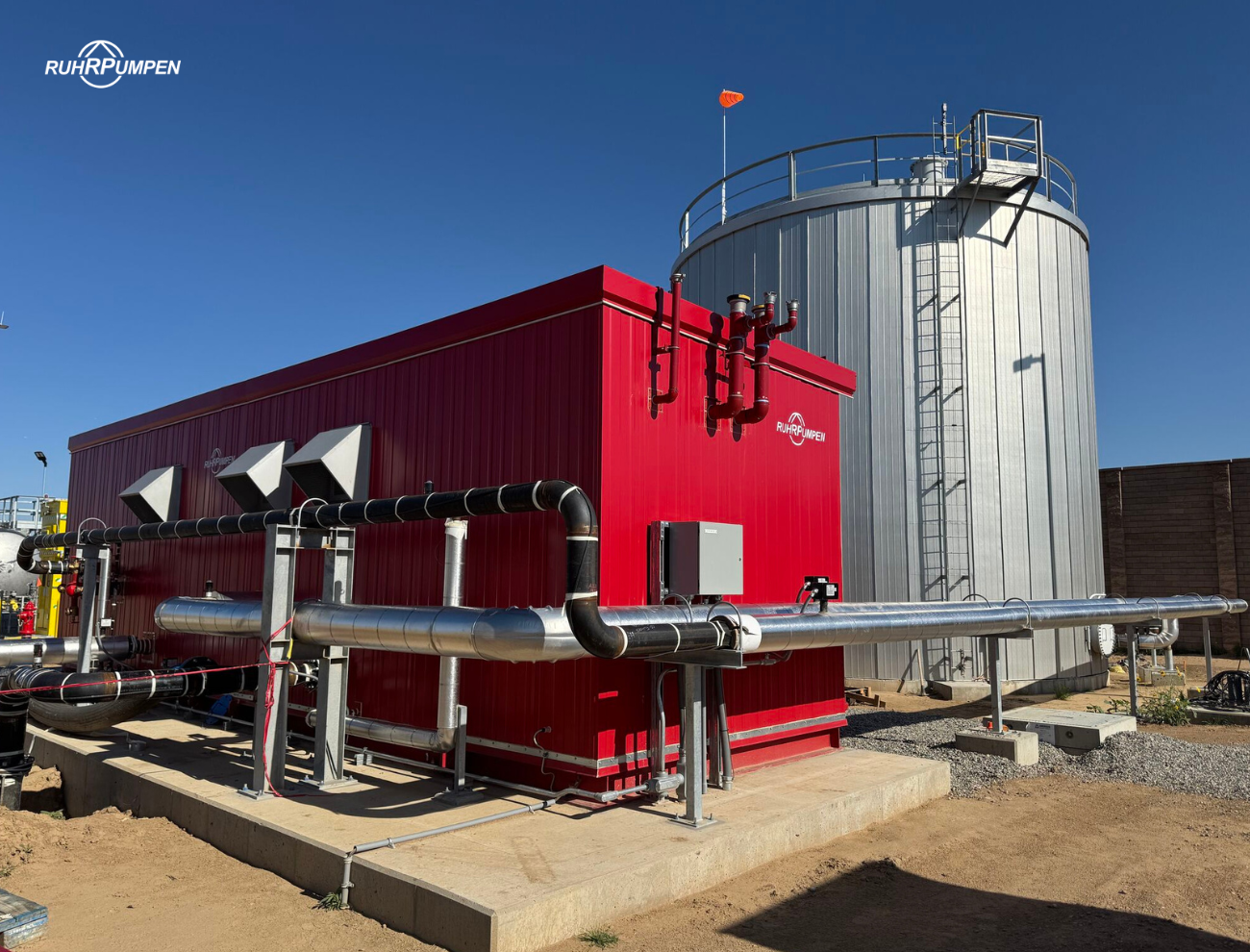
Furthermore, it is critical to ensure that all electrical components, especially disconnects and overcurrent protection devices, comply with NFPA 20’s requirements, and that overhead wiring is avoided in vulnerable areas. During system commissioning, both normal and alternate power sources should be tested under load conditions to confirm that the pump starts reliably and that voltage drops stay within permissible limits.
After installation, the power supply system must be regularly monitored and maintained. This includes routine testing of standby generators, verifying fuel availability for engine-driven pumps, and keeping detailed records of utility performance.
By following these guidelines, Ruhrpumpen can ensure that its fire protection systems meet NFPA 20 standards, providing dependable performance in emergency situations and satisfying both engineering best practices and AHJ requirements.
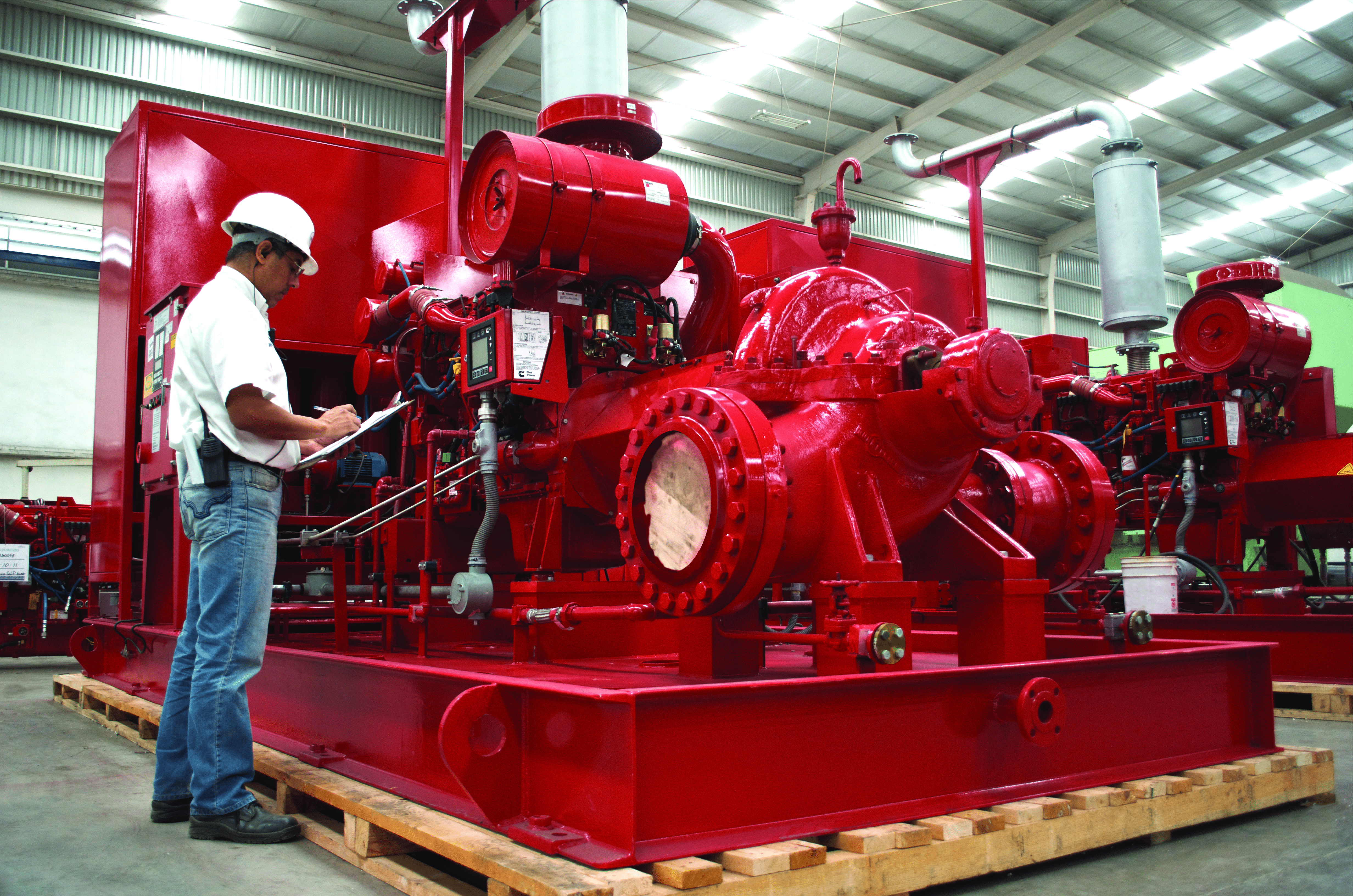

Are you looking for Fire Pumps and Systems to cover your pumping needs? Let Ruhrpumpen help solve your pumping demands.
Contact us now by clicking here.
FireWatch: World Updates
A major fire at a car battery warehouse in the United States once again highlighted the growing risks associated with lithium-ion storage facilities. The incident forced the evacuation of nearby residential areas due to toxic smoke and the potential risk of explosion, raising renewed safety concerns around the management of high-energy batteries.
According to emergency services, the fire escalated rapidly after ignition, generating thick plumes of smoke that spread across the surrounding area. First responders deployed specialized firefighting units and hazardous materials teams to contain the blaze. While no injuries were reported, the incident underscored how thermal runaway, a condition where batteries overheat uncontrollably, can turn into a large-scale industrial hazard.
The question of how best to suppress lithium-ion battery fires remains complex. NFPA 855 references that sprinkler systems (water-based) and water mist may play a role in containment or cooling, though water is not universally considered the primary extinguishing method. Other approaches, such as foam-based solutions, encapsulating agents, or clean agents, are also being evaluated depending on the type of facility and the scale of storage. What is clear is that cooling and containment are crucial to reduce the spread of fire and safeguard nearby structures and assets.
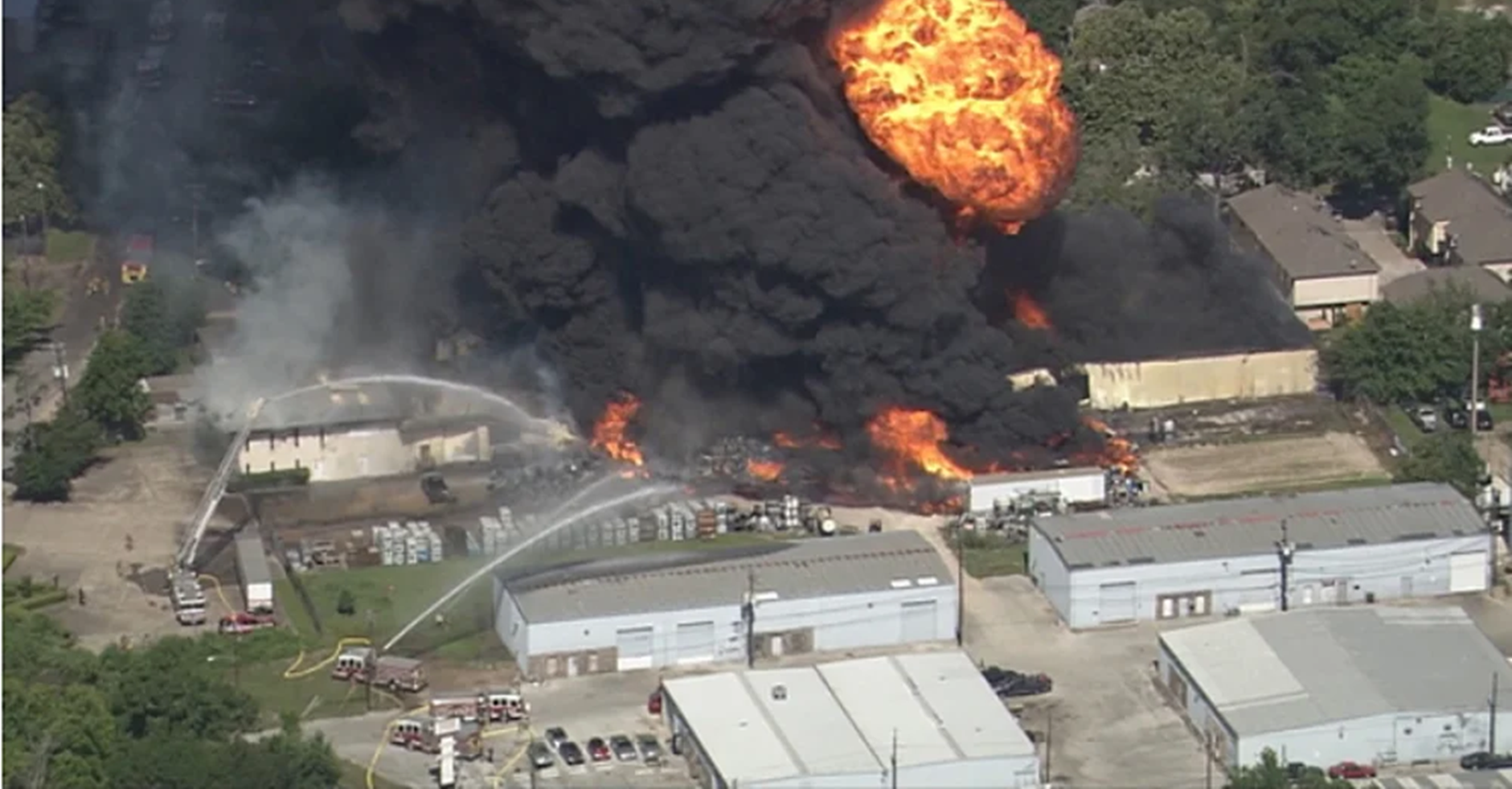
For operators handling volatile or high-density materials, this reinforces the critical role of reliable fire protection systems. Fire pumps and suppression equipment must be fully operational, compliant with safety standards, and capable of providing rapid pressure delivery, redundancy, and compatibility with different extinguishing agents as determined by risk analysis.
At Ruhrpumpen, our Fire Systems Division is committed to supporting critical infrastructure worldwide with UL/FM-certified pumping solutions engineered for resilience, compliance, and performance. Because when dealing with high-energy risks, preparedness is not optional, it’s the only defense.
While no single system can fully eliminate the risks of lithium-ion fires, robust protection strategies, and the reliable pumping systems behind them, remain essential for minimizing impact and protecting lives.
Ruhrpumpen's Spotlight
As part of its commitment to delivering reliable fire protection solutions for critical infrastructure, Ruhrpumpen’s Fire Systems Division recently completed the supply of a fully engineered, prepackaged fire pump system for a major industrial gases and chemicals facility in Edmonton, Canada. This project highlights our ability to meet demanding performance, safety, and compliance standards for world-class operations.
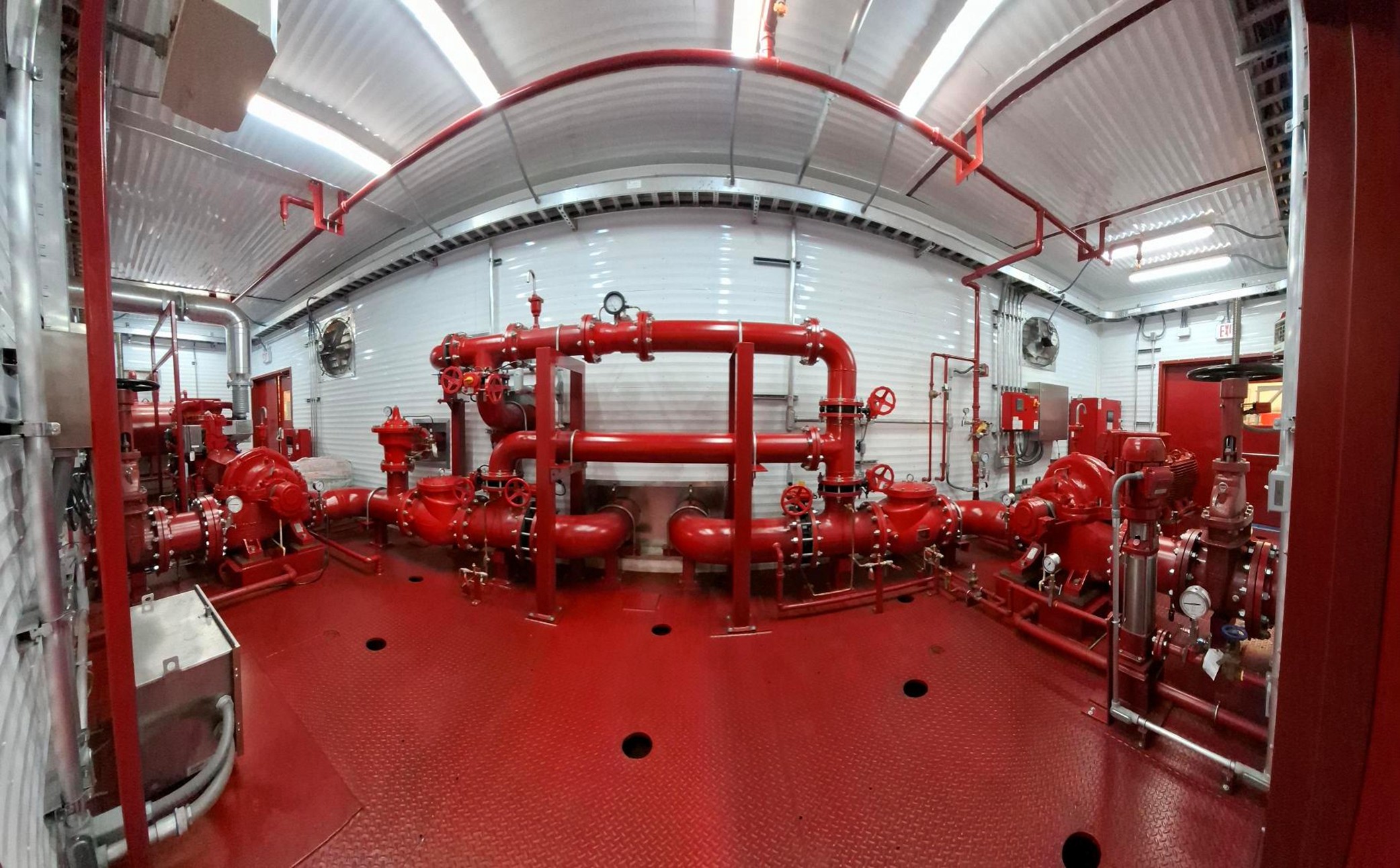
Engineered for High Demand Applications
At the heart of the system are two HSC 8x14x21E (E) horizontal split case fire pumps. These pumps are designed for durability, high flow rates, and reliable operation in line with NFPA 20 and international fire safety standards.
- Duty Point: 681.4 m³/h @ 106.5 m of differential head
- One pump is electric-driven, featuring:
- A 400 HP motor operating at 1800 RPM (4 poles)
- CSA-approved, suitable for CSA Safe / UL Fire Pump area classifications
- Direct-On-Line (DOL) starting method
- TEFC enclosure, with IP55 protection
- Operating at 460 V / 60 Hz / 3 phase
- The second pump is diesel engine-driven, equipped with:
- A 455 HP engine rated at 1760 RPM
- EPA Tier 3 Certified, with UL/FM approval
- 230V-AC, 2000 Watt jacket water heater for cold-weather reliability
- 24 VDC electrical system
- NEMA 4X/IP66 316 stainless steel instrument panel, ensuring corrosion resistance and system integrity
Integrated Jockey Pump for System Pressure Maintenance
To maintain system pressure and reduce pump cycling, the package includes a vertical inline multistage jockey pump, either Grundfos or Ruhrpumpen CR model:
- Flow capacity: 6.0 m³/h @ 106 meters
- ANSI 32 discharge and suction connections
- 3.7 kW electric motor at 3461 RPM, 460 V / 3 Ph / 60 Hz
- TEFC motor enclosure
- Equipped with anti-condensation heater and thermostat for extended motor life
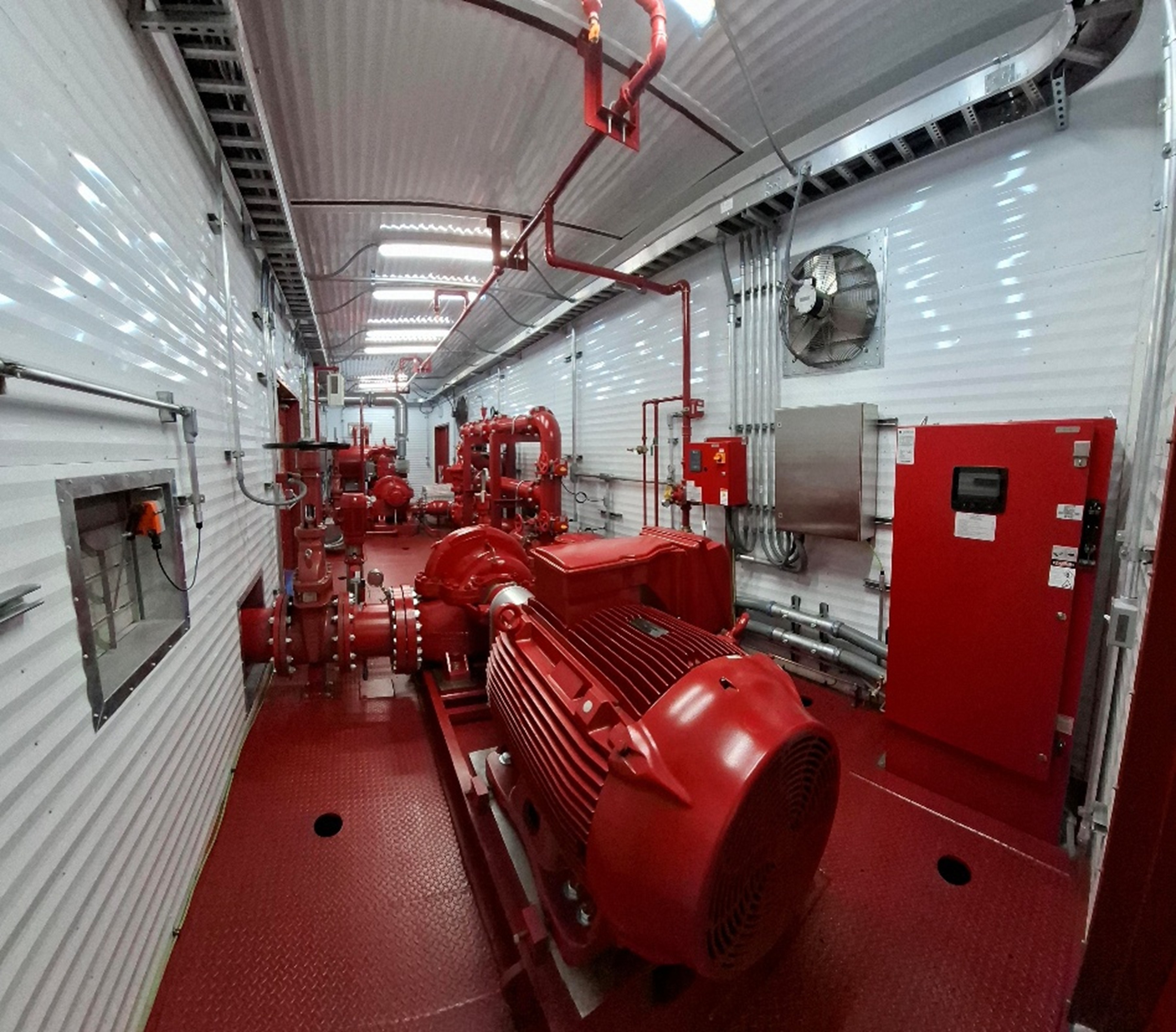
Prepackaged Pump House
All components were delivered in a fully prepackaged fire pump house configuration, minimizing installation time and ensuring factory-assembled quality. While the specific structural details of the pump house are proprietary, this all-in-one solution includes pre-installed piping, electrical connections, and controls — greatly simplifying site integration and commissioning.
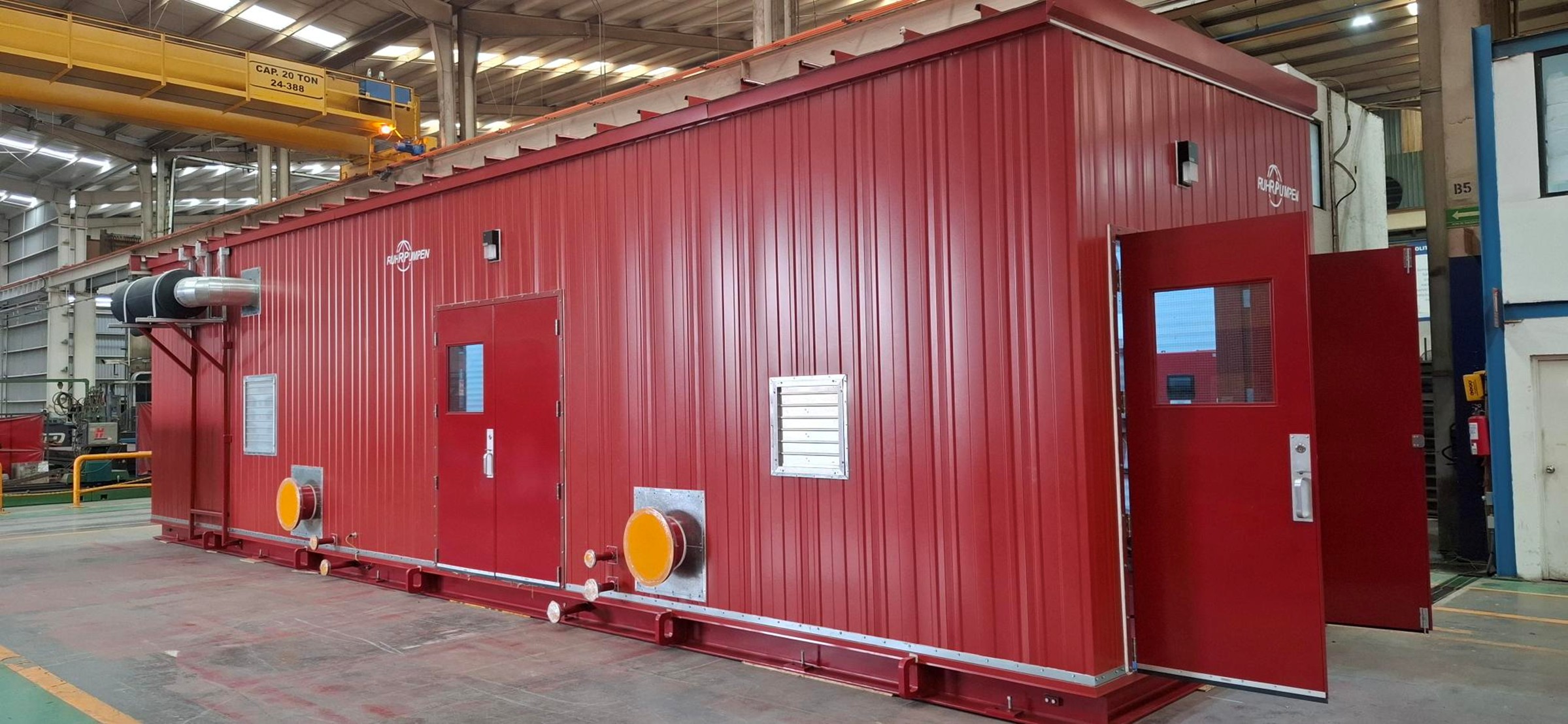
Serving a Leading Global Industrial Operator
The end user of this system is a global leader in industrial gases and chemical solutions, operating one of its key facilities in the Edmonton area. Known for supplying essential gases such as hydrogen, oxygen, and nitrogen to sectors including energy, refining, and manufacturing, this customer is recognized for its strict adherence to safety, operational uptime, and environmental standards.
Securing this project reflects Ruhrpumpen’s position as a trusted partner for high-profile industrial clients requiring dependable fire protection systems that meet exacting technical and regulatory requirements.


Are you looking for Fire Pumps and Systems to cover your pumping needs? Let Ruhrpumpen help solve your pumping demands.
Contact us now by clicking here.
Ruhrpumpen's Fire Campus: August 2025
Regular testing and preventive maintenance of fire pumps are essential to ensure safety in chemical facilities. NFPA 20, in conjunction with NFPA 25, requires that pumps be started and run at full speed at defined intervals to verify they are always ready for service. Weekly or monthly nonflow testing detects early signs of malfunction and confirms that pumps can respond effectively in an emergency, preventing small issues from escalating into serious hazards.
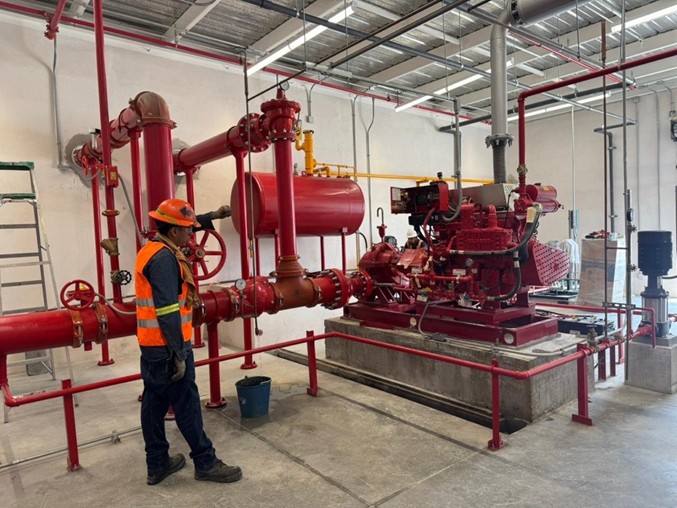
Routine inspections also help identify subtle performance degradations, such as a drop in net pump pressure, which may result from worn components, suction obstructions, or clogged impellers. Diesel engine–driven pumps require additional preventive measures, including checking engine temperature, oil, fuel, and cooling systems, ensuring that the pump can operate under maximum load conditions. Flowmeter tests and accurate monitoring of suction and discharge gauges further support reliable operation.
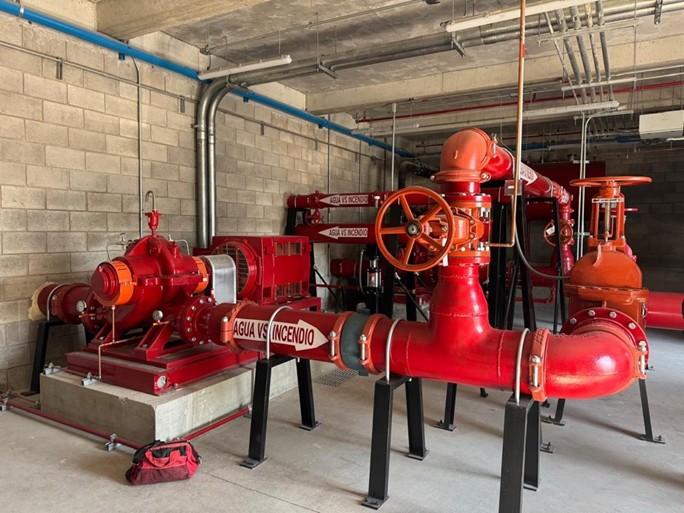
For chemical facilities, where stored substances can be highly flammable or reactive, these scheduled inspections and tests are the first line of defense. Maintaining detailed records of pump performance, maintenance actions, and operational parameters allows facility managers to act before failures occur.
Don’t wait for emergency, proactive testing and maintenance save lives, protect property, and ensure uninterrupted fire protection.
FireWatch: World Updates, August 2025
On June 30, 2025, a catastrophic explosion struck the Sigachi Industries plant in Pashamylaram, Sangareddy district, Telangana, at around 9 a.m. IST. The blast originated in the spray dryer unit, causing the surrounding four-story building to collapse while over 140 people were inside. Initial reports cited 36 deaths and 33 injuries, and by mid-July, the confirmed figures rose to 46 fatalities, 33 injured, and 8 missing. The intensity of the fire and the structural collapse resulted in many bodies being severely burned, necessitating DNA testing for identification.
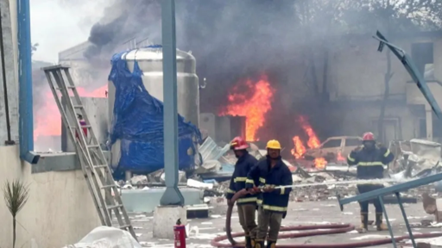
Sigachi Industries, a major global producer of microcrystalline cellulose (MCC)—used in pharmaceuticals, food, cosmetics, and specialty chemicals—saw roughly a quarter of its annual MCC production impacted by the disaster. In the quarter ending June 2025 (Q1 FY26), the company swung from a ₹13 crore profit to a ₹101 crore loss, despite revenue increasing 34% to ₹128 crore. To mitigate the impact, production from Pashamylaram was rerouted to its Gujarat facilities in Dahej and Jhagadia, while the Telangana plant was ordered to remain shut for 90 days.
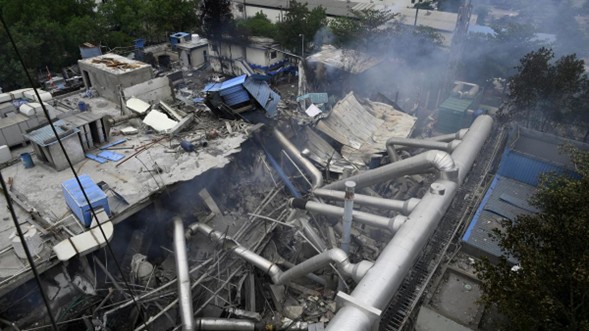
At Ruhrpumpen, this tragedy reinforces that reliable fire protection is far more than a compliance obligation. Robust fire pump systems, UL-listed and FM-approved equipment, and proactive maintenance are critical safeguards that protect lives, secure assets, and ensure uninterrupted business operations. Incidents like the Sigachi Industries explosion highlight why customers rely on Ruhrpumpen for engineered fire solutions that meet the highest global standards—solutions designed to keep facilities fully prepared, resilient, and ready to respond effectively in any emergency.
Ruhrpumpen's Spotlight: August 2025
At Ruhrpumpen, we take pride in safeguarding critical energy infrastructure around the world. One of our latest milestones is supporting the fire protection system of one of the most important LNG export terminals in the United States.
Strategically located in southeast Texas with direct access to the Gulf of Mexico, this facility will export approximately 13.5 million metric tons of LNG annually—a capacity that helps fuel global energy needs while supplying enough energy to power more than 27,000 homes each year.
A Complete Fire Protection Solution
To ensure the highest level of safety, Ruhrpumpen is delivering a fully preassembled, ETL-certified pump house. At the heart of this system are two UL/FM-certified horizontal split case fire pumps (HSC 8x14x21E), each rated at 3,000 GPM. One unit is driven by an electric motor, while the other is powered by a high-performance diesel engine, guaranteeing redundancy and reliability. Supporting them is a CPP21 jockey pump rated at 60 GPM, designed to maintain system pressure and readiness at all times.
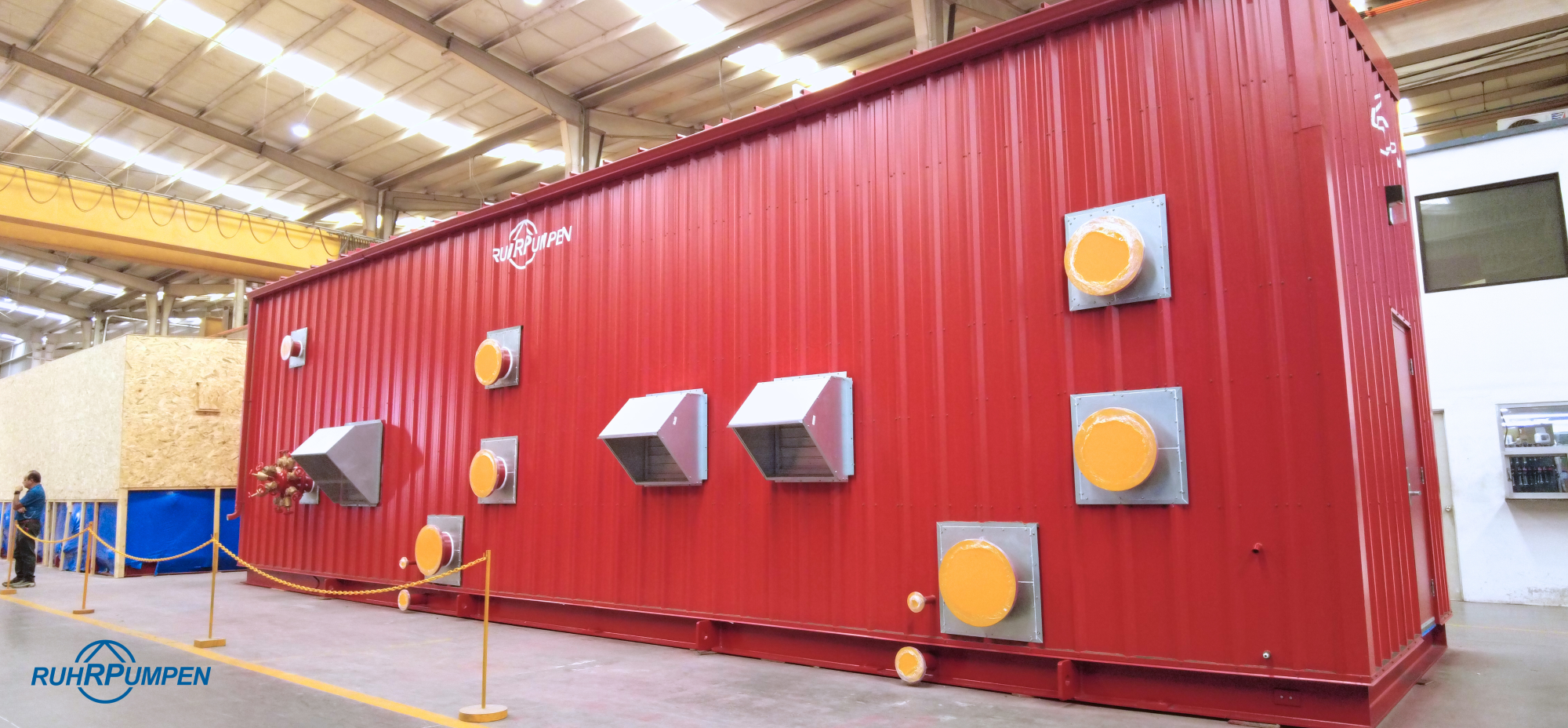
Meeting Unique Project Challenges
Every project comes with its own demands, and for this LNG terminal, the biggest challenge was meeting the customer’s requirement of 190 MPH wind load, Exposure Category C. Achieving this specification required close collaboration not only within Ruhrpumpen’s engineering team but also with our subvendor of panels, who modified the pump house panel structures to withstand such extreme conditions. This partnership ensured compliance without compromising quality, safety, or delivery timelines.
Built for Demanding Environments
This pump house goes far beyond standard configurations, integrating features that ensure operational continuity under extreme conditions, including:
- A double-walled diesel tank with flame arresters, overfill protection, and integrated alarms
- A roof hatch for safe and efficient pump and engine removal
- Full-length ice rakes for cold-weather readiness
- Seismic resistance and design for 190 MPH wind loads
- Integrated 5 kW unit heaters with thermostats for controlled internal climate
- An NFPA-13 compliant sprinkler system tailored for Extra Hazard Group 2 occupancy

Reliability You Can Trust
Engineered and manufactured to the strictest UL, FM, and ETL standards, this fire protection solution delivers more than equipment—it delivers peace of mind. With a system designed to perform in the harshest environments, Ruhrpumpen ensures that critical LNG operations remain protected, reliable, and resilient.
At Ruhrpumpen, powering safety is not just our mission—it’s our commitment to every customer, every project, and every community we serve.
